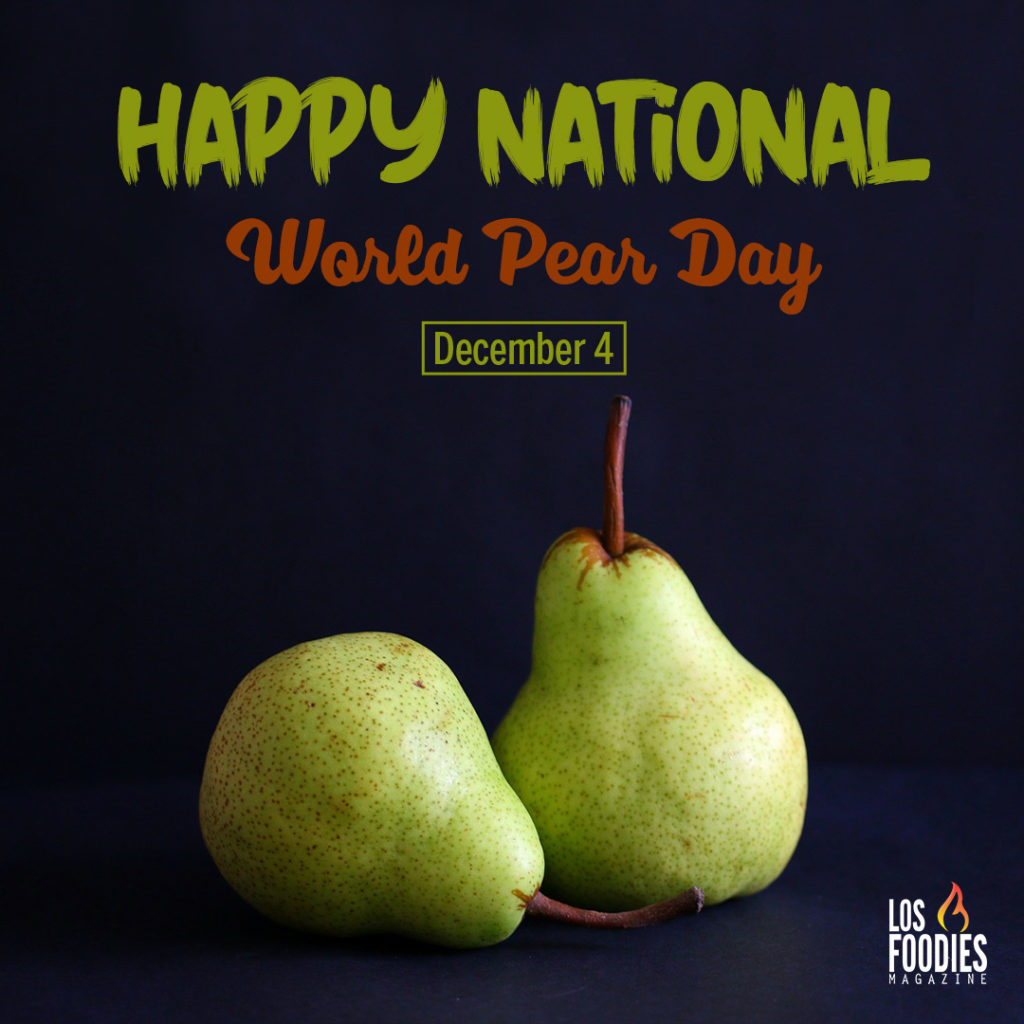World Pear Day a juicy and sweet fruit that has been around since 5,000 B.C. Due to their versatility and long shelf life, In the 18th century, the pear tree was included in the famous carol, The Twelve Days of Christmas.
The first American colonists brought pear trees to eastern settlements. For various reasons, the trees did not grow well in the east.
However, pear trees thrived in the west, especially Washington and Oregon. Today, these two states take pride in some of the largest and most prolific pear orchards in the world.
Thanks to the abundant pear harvest in these two states, the United States is one of the largest pear producers in the world.
National Pear Month, started by USA Pears and officially declared by the U.S. Department of Agriculture, is a month-long holiday dedicated to educating people about how to tell the ripeness of pear and how to make the most out of eating pears.

Pears are a member of the rose family and have been enjoyed by people for thousands of years.
Pears originated in southeastern Europe and were a favorite food of the ancient Greeks and Romans.
The ancient Greek author Homer described them as “gifts from the gods” likely due to their sweet, juicy flavor.
The early Romans developed 50 varieties of pear and planted them across Europe.
Pears are not native to the United States. The first tree was planted in the US in 1620. By the 1700s many European settlers were growing pears.
They were given the nickname “butter fruit” because of their soft, melting texture. Today, pears are found growing all over the world.
Most of the pears sold in our grocery stores are grown in the US, but during the winter, you may find pears grown in Chile, New Zealand, Australia, and Argentina. National Pear Month encourages people to eat more pears and get more creative with pear recipes because of their texture and light flavor.
As part of this celebration, USA Pears creates national tours and chef competitions to create the most out of using pears to help shine the light on how pears can improve overall health and being.
Pears can be grown in a wide range of soil and can fit within a small space making them a good choice for gardeners. Choosing the right variety is key to achieving quality fruits. It is advisable that two varieties of pears be planted since cross-pollination will be required to produce fruits. However, the two types must be compatible with each other. The soil must be well-drained and fertile.
The standard space between trees should be about 20 to 25 feet. The young trees should be regularly watered to help them establish roots. Fertilizer can only be applied in the early years of the plant while pruning should be done regularly to help the leaves and branches spread outward and not upward.
One should watch out for diseases and pests such as fire blight and mites which can delay the maturity of the tree. Harvesting should be done when the fruit is almost mature when it is still hard.
Pears can be consumed as fresh, canned, juice, or dried. Pears juice can be used in jellies and jam in combination with other fruits including berries.
Pears are low in calories, but high in fiber. The fruit is an excellent source of vitamin C and other minerals such as copper, iron, and manganese.